Year: 2014
-
More Than 50 Authors Sign Up for Indies First Storytime Day
Indies First Storytime Day is set to take place on May 17, 2014. “In a twist on the inaugural celebration of Indies First started by author Sherman Alexie, rather than …
-
Phyllis Krasilovsky Has Passed On
“One of her most popular titles, The Cow Who Fell into the Canal (Doubleday, 1957) almost wasn’t published, according to Peter Spier, who illustrated the book. Spier described meeting with …
-
Shadra Strickland On Her Illustration Career: “I Worked Harder”
“It’s strange being black and a woman in a field that has historically celebrated white male contributions. Before I was published, I wondered if the only way in was to …
-
Jon Scieszka & Brian Biggs Collaborate On a New Middle Grade Series
Brian Biggs, a seasoned children’s books illustrator, created the artwork. Amulet Books, an imprint of ABRAMS, will release the first book on August 26, 2014. Future installments will focus on …
-
Reading Out Loud is One Way to Battle Illiteracy
Illiteracy continues to affect both children and adults. 793 million people around the world have been found to be illiterate. Within the United States, 32 million adults cannot read. “Dominique …
-
Simon & Schuster Re-Designs Five Judy Blume Book Covers
In addition to the design renovation, each cover also includes a new tagline. For Are You There, God? It’s Me, Margaret, arguably Blume’s most popular title, the following tagline is …
-
E-Book Rising: The Changing Market in Children’s and YA Books
2013’s numbers reflect a predictable sales dip on the heels of the success of The Hunger Games in 2012. The popularity of the series on e-books is also indicative of …
-
We’re all in this together
Over the month of February, the CCBC Listserv has had a very involved conversation around diverse children’s and young adult literature and, among other things, how to support what’s out there, how to understand the nuances involved in artistic creation, and how to encourage more authors and illustrators to create/publishers to produce.
The lovely Sarah Hamburg—we don’t know her personally but can only assume the loveliness because of her thoughtful and truly lovely suggestion—put to the group to think about ways in which we can not only continue to keep this conversation going, but moving forward through action and activism. She asked the listserv contributors to put on their thinking caps and come up with ways in which to 1) put their words into actionable goals as well as to 2) think of other organizations and people involved with increasing the representation in kid lit that are already moving the needle with their presence and behavior. Well, that’s at least what the responses were about to her question:
What does/would activism on these issues look like to you?
Below is the living/breathing document that Sarah put together on the CCBC Listserv for all to comment on and add their thoughts to. It has truly already started much conversation as this document lives on many blogs with thoughts being contributed across the web. Below are just a sampling of the ones we’ve seen so far:
Elizabeth Bluemle’s PW Shelftalker Column—"Money, Meet Mouth"
Edi Campbell’s Sunday Morning Reads Post
Uma Krishnaswami’s Blog Post—"From a Joint Discussion, Belonging to Everyone: Diversity in Children’s and YA Literature"
Lyn Miller-Lachmann’s Blog Post—"It’s All Good! How You Can Create Diversity in Publishing"
American Indians in Children’s Literature—"CCBC-Net Action Items"
Thaddeus Andracki’s Blog—"Taking Action to Make Children’s Literature Better for People of Color"
Be sure to check out the comments under each listing and feel free to place comments here as well as we all work towards a more inclusive children’s book industry.

I don’t know if I’m at all the right person to do this (in fact I’m sure I’m not), but as the conversation winds down I hope it’s okay to draw together the responses to the question about activism, and add some other possible thoughts/questions as well. Please step in if I’ve left anything out/ not hit the mark, or to take over!
Many of the ideas focused on personal activism:
- Actively buying books representing a diverse range of voices
- Committing to ongoing challenges (Crystal Brunelle mentioned The Birthday Book Challenge, Diversity on the Shelf Challenge, and Latino/as in Kids’ Lit. Challenge)
- Recommending and promoting diverse books to others when and wherever possible
- Asking for them at bookstores, schools and libraries; using social media in those efforts and to draw attention to issues of representation
- Writing reviews on Amazon, B&N and Goodreads
- Stepping out of personal comfort zones to make connections and advocate on these issues
For writers and illustrators, people also suggested personal activism would include:
- Stepping out of artistic comfort zones
- Consciously considering questions of representation, audience and perspective in one’s work (including whether the perspectives and voices of people of color tend to be explored/presented in a heavy context)
- Soliciting and listening to feedback from members of the communities one is writing about when going outside one’s own culture
- Considering questions of cultural bias and representation while conducting research and evaluating sources
The same considerations hold true for those publishing, buying and using books with children, promoting books to parents and teachers, creating library and bookstore displays… etc. including whether those books receive the same quality and quantity of promotion, and whether they are somehow held apart from other books.
Many came back to the importance of smaller presses in making space for new voices.
- Cinco Puntos Press
- RoadRunner Press
- Lee & Low Books
- **Post others you know of in the comments!**
Lyn Miller-Lachmann talked about visiting smaller presses at conventions to order books and create buzz. Jason Low talked about “liking” Lee & Low on Facebook and using social media to promote them and their titles, and purchasing their books through independent bookstores. Are there other ways people can actively support small presses, or that smaller children’s publishers can perhaps share resources to further cross-promote with one another? (Some consortium, such as an umbrella website?)
People also mentioned the importance of writers’ events and conferences:
- Native American Literary Symposium
- VONA Voices
- Lambda Literary Foundation
- Asian American Writers’ Workshop
- Muslim Voices Conference
- Comadres y Compadres Latino Writers Conference
- Carl Brandon Society
- National Black Writers Conference
- **Post others you know of in the comments!**
Is there a way to facilitate more outreach to events such as these, and also encourage more inclusion/ promotion of writing for children at those events?
Along with such conferences, people talked about the possibility for individual outreach to writers/ artists who are working in other areas, but who seem like they might be suited to the children’s book field (like Debbie Reese introducing Eric Gansworth to Cheryl Klein.)
It’s exciting to see new businesses forming, like:
- Cake Literary, a packager focusing on “bringing diversity to high concept content”
- Quill Shift Literary Agency, a literary agency actively seeking diverse content and providing readers with the opportunity to show that there is a market for diverse books before they are sent to the publishing house
- **Post others you know of in the comments!**
Are there other ways people could help promote them?
People have also started an amazing array of blogs, websites and tumblrs that focus on aspects of diversity in children’s books. These include:
- Diversity in YA
- Rich in Color
- American Indians in Children’s Literature
- The Dark Fantastic
- CBC Diversity
- Lee & Low’s blog
- Cynsations
- CrazyQuiltEdi
- BookDragon
- Latinas for Latino Literature
- Latin@s in Kitlit
- All Brown All Around, Into the Wardrobe
- Shannar Reed Miles-A Blerd Girl Writes
- Bad NDNs
- Miss Domino
- Mitali’s Fire Escape
- Disability in Kidlit
- Visibility Fiction
- I’m Here I’m Queer What the Hell Do I Read?
- The Naughty Book Kitties
- Kristi’s Book Blog
- Guys Read
- Zetta Elliot’s Blog
- Mamiverse
- I’m Your Neighbor
- World Full of Color
- The Brown Bookshelf
- **Post others you know of in the comments!**
In addition, people asked that “diversity” be an inclusive idea, and not limited to one group or set of groups.
Along with these existing or already mentioned avenues for activism, I had a few other possible ideas based on issues people have raised. Some may well already exist in some form, and if so please excuse my ignorance! I also don’t know if some may feel segregating rather than inclusive, or otherwise problematic— but here they are:
(All initiatives mentioned below would include leadership in design and implementation by people from the communities in question. Elsa and others, I didn’t feel like the right person to know where/ how to include Muslim/ Arab Americans in different contexts— so if you would like to adjust categories please do.)
- School Library Journal/ Horn Book…etc. might create a regular column, written by a Native, PoC, and/or LGBT, and/or Muslim, and/or disabled contributor, which might discuss issues regarding children and books in different communities, or highlight reviews of recent books by people from those communities, or discuss collection development/ classroom use issues related to problematic books, or be published in a bilingual format, or simply be a space always kept open for additional voices from less-represented communities.
- Development of a course within the Massachusetts 5-college area, in conjunction with the Carle Museum, for Native college students/ students of color to study illustration and writing for children.
- Outreach to a group like 826, with centrally-organized workshops about writing/illustrating led by people in the children’s book community.
- A group within SCBWI for Native artists/ people of color to meet and speak about issues in the field specific to their communities, and provide resources and networking opportunities.
- A subsidized (with some form of community grant?) internship at one of the children’s publishing divisions or literary agencies for a person of color or Native person.
- Some form of organized mentorship program for aspiring authors/ illustrators.
- A bilingual division of something like Net Galley, featuring bilingual books, and other books by Latino/a writers and illustrators.
- A group made up of members of publishers’ marketing departments, convened to study marketing strategies and approaches, with leadership that includes, outreach to, and input from members of different communities.
- Some e-publishing/ print-on-demand initiative or business, focused on bringing back out-of-print titles by people of color.
- Also, something like the New York Review of Books Classics, which would bring back into print/ reissue/ highlight classic children’s books by people of color— including international titles. (Or, actively petitioning the NYRoB children’s collection to include more such titles— do they currently have *any* books by people of color on their list? I couldn’t find them.)
- Concerted outreach at events like Bologna to find and acquire titles by international authors of color/ indigenous authors for publication in the US.
- Something like the PEN New England Discovery Award (which recognizes the work of unpublished children’s writers, and provides an opportunity to have that work read by an editor at a publishing house) that would be national, and would recognize work by unpublished Native/PoC writers. It could include a specific category for nonfiction.
- Inclusion of Toni Morrison’s book Playing in the Dark (and Zeta Elliott’s article “Decolonizing the Imagination”) on the reading list at MFA Programs focused on writing for children, with a curriculum that includes more lectures/ discussions about race, writing and the imagination— not just in the context of discussion about writing outside one’s own culture.
- Focused outreach as part of recruitment initiatives for MFA in writing for children programs (perhaps writers’ conferences like those listed above would be one good place?) and promotion of existing opportunities like the Angela Johnson Scholarship.
- A centralized resource for parents/ teachers that would look at still-read classics and more contemporary books, and examine different responses/ perspectives on those books related to representation. This might include strategies and perspectives on classroom use. (A sort of “critical engagement” resource, with different perspectives- like that of Debbie Reese’s American Indians in Children’s Literature.)
- More inclusion of issues related to representation/ cultural bias in reviews of current nonfiction and fiction titles.
- Some central website to publish/ promote lists of recommended titles (such as the Top 100 Books by Indigenous Writers, Recommended Books regarding the Middle East, Lee & Low’s Pinterest pages, and the many other lists of recommended books shared here…) There might also be the possibility of compiling and promoting new lists, based on the needs and interests of those who work with children. Maybe individual titles from the lists could be highlighted on a rotating basis as well.
- Lobbying and activism on related issues, such as funding for public schools and libraries, and support of those institutions (as well as businesses like independent bookstores) on the local level.
- As Malinda Lo asked for, greater inclusion of PoC/ Native/ LGBT/ Muslim/ disability community voices at the head of these discussions.
-
20,000 Teachers Provide Powerful Insights on Teaching in an Era of Change in New Primary Sources Survey
NEW YORK, NY – Scholastic (NASDAQ: SCHL) and the Bill & Melinda Gates Foundation today released results from the comprehensive survey Primary Sources: America’s Teachers on Teaching in an Era of …
-
Sylvan Dell Publishing Changes Its Name to Arbordale Publishing
Effective March 1st, Sylvan Dell Publishing changes its name to Arbordale Publishing (www.ArbordalePublishing.com). In business since the fall of 2004, the publisher will continue to produce the same quality fun-to-read picture books with …
-
Lives Undocumented: An Interview with Maria E. Andreu
Interview contributed by Lyn Miller-Lachmann
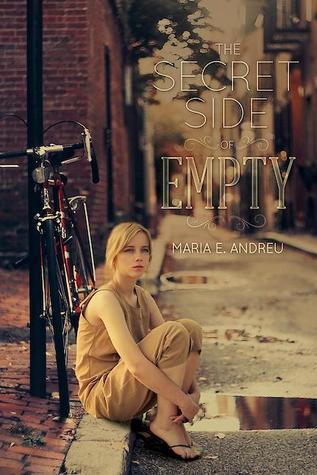
Maria E. Andreu’s debut novel, The Secret Side of Empty (Running Press Kids, March 2014), offers an honest, authentic portrait of an undocumented high school senior who carefully hides her circumstances even from her closest friends, and cannot apply for college despite her near-perfect grades. Even before publication, the novel received glowing reviews and accolades, including a spot on the Junior Library Guild’s spring 2014 list. In this interview for CBC Diversity, Andreu talks about her own life as an undocumented immigrant and how things have or haven’t changed for these bright, promising young people who live in the shadows.
You have stated publicly that much of M.T.’s story is based on your own experience as an undocumented immigrant from Spain in the 1970s and 1980s. What are some of the specific parallels between your own story and that of your protagonist?
I like to say that the facts are all different but the feelings are the same. I felt the same isolation and hopelessness that M.T. feels. I didn’t know how I would go to college. I felt the economic disadvantage. But I was a teenager during the 1980s so of course I didn’t connect with my high school boyfriend on Facebook and didn’t have a cell phone. I felt it was important to make M.T. a modern teen so that readers today wouldn’t get bogged down in the 80s references. But the experience is genuine, if fictional. And, fun side note, the post-it scene and the “slow speed chase” both really did happen.
M.T. often refers to herself as an “illegal.” Advocates for better conditions for undocumented immigrants and a path to citizenship tend not to use that word, arguing that “no human being is illegal.” Why does your first person narrator choose to use a term that many consider politically incorrect or insensitive?
I cringed using it. As an adult I’ve gotten involved in the social justice community and have worked with migrant workers, so I know that “illegal” is an awful word. (I happen to own a t-shirt that says, “No human being is illegal”). But the truth about M.T. is that she is deeply ashamed of herself. Like a lot of young people, she can’t see the external forces at work in her life. She feels responsible, different, stained somehow. Also, she’s pretty uninformed about the whole political side of her situation. Instead of reaching out and organizing like so many brave undocumented people do today, she isolates herself. So “illegal” is the word she’d use. It’s the word I believed about myself until I learned better.
People immigrate to the United States for a variety of reasons, and the circumstances that drove M.T.’s family are complex—on the surface economic, but there’s more to it. Can you talk more about this, and how it affects M.T. and her family’s life now that they are in the United States?
I didn’t want to take the easy road and make her parents’ migration some black and white heroic escape from tyranny. I think that’s the reason a lot of people come to the U.S., but it’s not the only one. I wanted it to be more complicated than that. If her parents had been escaping abject poverty or political persecution I was concerned that readers would be hesitant to examine their motives and choices. For me, that would have turned it too much into a “victim” story.
Her parents came here by choice but couldn’t have foreseen what that choice would mean. I think that’s an important look at the immigrant experience. M.T.’s parents, and her dad in particular, are at that point in their lives in which they’re wondering what it all means. They left behind loved ones and everything familiar to take this chance in a new country. Their hope was to make it big. That hasn’t worked out and so they’re stuck. I think her dad’s method of coping is to blame this country. It creates a tremendous rift between him and M.T. because he fails to understand that their opinions about the U.S. are fundamentally different. And she doesn’t really understand her parents’ struggles either. They’re experiencing the same reality in ways that pit them against each other.
Why did you choose Argentina as your protagonist’s country of origin, and what kind of research did you do to learn about that country’s situation and that of its migrants to the United States?
My own background is more complicated than just “Spaniard.” It’s kind of tough to explain to people, so I made M.T.’s story easier. My parents were born in Spain and emigrated to Argentina as toddlers. They met and married in Argentina. When I was going to be born, they moved to Spain briefly, so it was kind of a fluke that I was born there. They speak Spanish with an Argentinian accent, as do I. But my passport (before I got my fabulous American one thanks to the 1986 amnesty) was from Spain. Their whole immediate family—brothers, sisters, cousins—are all in Argentina. Then they emigrated to the U.S. when I was an infant. The plan was to work for six months, save up money and go home to Argentina. And… well, life had other plans.

Author Note: As you can see, it’s a story that bogs you down a bit, so I made M.T.’s background simpler. In some ways, M.T.’s family’s country of origin matters less than the fact that they feel the strong pull of another place. But I do know about the struggles of my own family, both those of us who stayed here and those of us who remained in Argentina. And I’ve visited Argentina as an adult as well. I used those memories to build certain details, like the description of the dance at the town square and other stories M.T. hears.

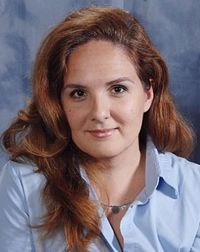
Maria E. Andreu is the author of the novel The Secret Side of Empty. She draws on her own experiences as an undocumented teen to give a glimpse into the fear, frustration and, ultimately, the strength that comes from being “illegal” in your own home. Now a citizen thanks to legislation in the 1980s, Maria resides in a New York City suburb with all her “two’s”: her two children, two dogs and two cats. She speaks on the subject of immigration and its effect on individuals, especially children. When not writing or speaking, you can find her babying her iris garden and reading post apocalyptic fiction. Read more at http://mariaeandreu.com.
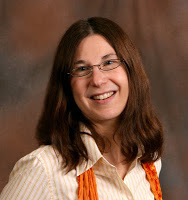
Lyn Miller-Lachmann is the former editor-in-chief of MultiCultural Review and the author of the young adult novel Gringolandia (Curbstone Press/Northwestern University Press, 2009), a 2010 ALA Best Book for Young Adults and an Américas Award Honor Book and Rogue (Penguin/Nancy Paulsen Books, 2013), a Junior Library Guild selection. For more information, visit Lyn’s website, www.lynmillerlachmann.com.
-
HarperCollins Delays Release Date for ‘Four: A Divergent Collection’ Until July 2014
The finished book will feature four short stories and two scenes all told from Tobias “Four” Eaton’s point of view. “The first three pieces in this volume—’The Transfer,’ ‘The Initiate,’ …
-
The Particular Difficulties: Brian Floca on Watercolor
“I now especially enjoy those stretches of picture making — often involving smoke, clouds, or something moving at speed, blurring across the picture — in which the watercolor can most …
-
Jarrett J. Krosoczka on How Graphic Novels Can Engage Reluctant Readers
“…parents will often thank me for turning their kids onto reading. It’s high praise, but praise that I cannot take full credit for. Sure, I wrote all of the words …
-
With the End of February Comes a Brand-Spanking-New Diversity Newsletter!
Click to view CBC Diversity Newsletter February 2014 v. 2 on GLOSSI.COM
-
Random House Children’s Books Launches Dr. Seuss’s Birthday Club
Random House Children’s Books in partnership with Dr. Seuss Enterprises, L.P. is launching Dr. Seuss’s Birthday Club, an exciting and brand new online club for kids and their families that …
-
ALA Reveals 2014 ‘Great Graphic Novels for Teens’
The Great Graphic Novels for Teens Committee has also created a Top Ten list of books that stand out and particularly “exemplify the quality and range of graphic novels appropriate for teen …
-
CBC Diversity: A Conversation with Jonda C. McNair, Chair of the Coretta Scott King Book Awards Committee
Interview conducted by Wendy Lamb
Wendy Lamb:
Can you please tell me something of your background, and your work in children’s books?
Jonda McNair:
After graduating from high school in my hometown of Macon, Georgia, I attended the University of Florida where I earned both my bachelor’s and master’s degrees in elementary education. One of my professors at the University of Florida, Dr. Linda Leonard Lamme, really turned me on to children’s books. She introduced me to authors and illustrators like James E. Ransome, Eloise Greenfield, and Floyd Cooper. I remember her sharing books such as Uncle Jed’s Barbershop by Margaree King Mitchell with our class.
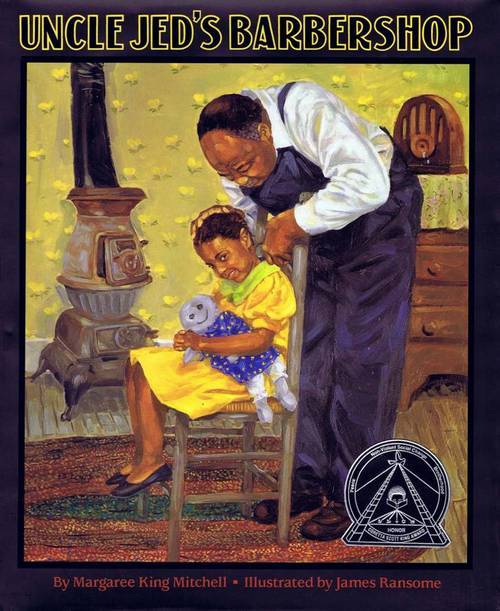
After graduation, I kept in touch with Dr. Lamme while I was teaching elementary school in Macon and she encouraged me to pursue a doctoral degree in children’s literature at The Ohio State University. She knew about its exceptional program in children’s literature. After five years of teaching students in kindergarten, first, and second grade, I resigned from my position and moved to Columbus, Ohio to attend graduate school. It was there that I had the opportunity to work with Dr. Rudine Sims Bishop, a leading scholar of African American children’s books. These two women have had a profound impact on my career and life.
Currently I am an associate professor of Literacy Education at Clemson University in South Carolina and I teach reading methods and children’s literature courses for early childhood, elementary, and special education majors. I mainly teach undergraduates but I occasionally teach graduate students working on their master’s and doctoral degrees in literacy education.
WL:
As an educator, you have a Family Literacy Project: I Never Knew There Were So Many Books about Us: Parents and Children Reading African-American Literature Together. I read a very interesting interview with you on The Brown Bookshelf about this.
Are you working on similar programs or initiatives now?
JM:
Initially, a grant from NCTE (the National Council of Teachers of English) funded the Family Literacy Project. I was also supported by the local chapter of Alpha Kappa Alpha Sorority, Inc. Eventually the funding ran out, but my sorority members liked the program so much they wanted to contribute and keep it going. Now we have an annual half-day program at the public library in August. Ten to fifteen families participate. I present a power-point presentation, talk about the Coretta Scott King Award, and share tips on how to conduct interactive read alouds. Each family gets to choose 10 books written by and about African Americans, along with CSK stickers, and People Colors crayons from Lakeshore Learning Materials. The program has become quite popular in our community; families hear about it and get on the waiting list.
At Clemson, I’m the faculty advisor for the IRA (International Reading Association) Student Council and most of its members are undergraduates majoring in early childhood and elementary education. I wanted the students to participate in a service project that would entail giving back to the community, and also books. I reached out to the Upstate Homeless Coalition of South Carolina, a non-profit organization dedicated to ending homelessness. This organization provides housing and also puts on programs for children and their families such as annual Christmas parties. We create goody bags to be handed out to the children at the Christmas parties. We create bags for newborns and up, to age 18. Every child gets a book, even the babies, who also get several pairs of socks and a hat. Older children get items such as crayons, marbles, Play-Doh, or a game. We’ve been doing this for about 6 or 7 years now.
Recently I decided to go after a grant to purchase books and other literacy materials (e.g., a writing suitcase) so these children will have access to print in their homes and be able to carry these items with them in the event that they have to move.
WL:
Why did you take on the role of chair of the Coretta Scott King Book Awards?
JM:
Honestly, I was a bit hesitant to take this role on due to all of my responsibilities as an associate professor (who is going up for full professor during my tenure as Coretta Scott King Chair), but Chrystal Carr Jeter, the previous Chair, was very persuasive and I have received a lot of support from her and the rest of the committee.

I feel like it is a really important award that promotes African American children’s literature and its creators—a passion of mine and the area in which I conduct my academic work. It also gives me a chance to interact with people (e.g., Walter Dean Myers, Kadir Nelson, Jacqueline Woodson, Tonya Bolden, etc.) whose work I admire and read.
WL:
What are your goals as chair?
JM:
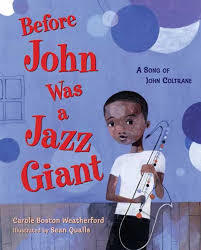
I have two main goals to accomplish as CSK Chair. The first is to promote the 45th anniversary of the award and we have a number of things in place for this. For example, we are planning a special panel discussion (with Andrea Davis Pinkney serving as the moderator) with winners of the award over several decades. This will take place during the 2014 annual convention in Las Vegas. The second goal I hope to accomplish is to see that a CSK award-winning book is developed into an app. I have two young nephews who love the children’s book apps on my iPad and the only one I have that is written by an African American is Freight Train by Donald Crews—though the subject matter is more “neutral” in a sense. I would love to see a book like Before John Was a Jazz Giant: A Song of John Coltrane by Carole Boston Weatherford be made into a picture book app for children.
WL:
The American Library Association website says that the Awards “are given annually to outstanding African-American authors and illustrators of books for children and young adults that demonstrate an appreciation of African-American culture and universal human values.”
Are American writers whose more immediate roots are not in Africa but somewhere else—such as a Haitian-American writer, or a Jamaican-American writer—also eligible?
JM:
Yes. One of the criteria is that the author self-identifies as African American, whatever his or her roots, but the book can be about the black experience worldwide, such as a book set in Brazil or one about Nelson Mandela.
WL:
Has the pool of strong submissions grown in the last ten years?
JM:
Unfortunately, no. The number of books published by and about folks of color has remained relatively stable over the last 10 years. The numbers are still low, especially in regard to Native Americans. For example, according to the statistics compiled by the Cooperative Children’s Book Center at the University of Wisconsin—Madison, in 2002 and in 2012, 6 books by Native Americans were published. This is disturbing, especially in light of the stereotypical thinking about Native Americans that is all too commonplace in our society.
WL:
It seems that there are more black men who are artists, rather than novelists. Is this changing?
JM:
I too have noticed that women tend to write and that men tend to illustrate, though I am beginning to see a few men like Kadir Nelson who illustrate begin to write as well. I do wish there were more African American female illustrators like Faith Ringgold, Shadra Strickland, and Sonia Lynn Sadler (who recently passed away). In my opinion, this trend is not changing, either.
WL:
How can publishers do a better job of finding, and publishing, writers and artists of color?
JM:
I don’t know a lot about how the publishing world works but I do feel like publishers need to make a concerted effort to seek out new authors and illustrators of color. One way might be to develop writing contests similar to those sponsored by the Council on Interracial Books for Children. The winners of those contests included folks like Mildred Taylor and Walter Dean Myers—and we all know what an impact they have had.
I think publishers need to seek out employees (e.g., editors, marketing managers, etc.) that represent the diversity of the world in which we live. When I visit publishing booths at conferences, the majority of the people that I see appear to be White. Having a more diverse publishing workforce could possibly impact the finding and publishing of artists of color. For example, I was really impressed with the Jump at the Sun imprint that Andrea Davis Pinkney created while she worked at Hyperion. I also think that working with editors of color might be a benefit to White authors, especially those who choose to write about people of color.
WL:
Absolutely. And white editors can benefit from working with editors of color. About finding authors: publishers are concerned because we simply don’t receive many submissions from writers of color. As you point
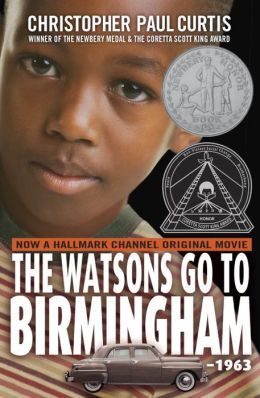
out, contests were fruitful—another example is of Christopher Paul Curtis submitting The Watsons Go To Birmingham-1963 to the Delacorte First YA Novel contest. But it seems that nowadays promising writers tend to find an agent rather than submit to a contest. Since the majority of what we publish comes from agents, the CBC Diversity Committee is planning a Diversity Dialogue with agents to talk about what we can do to find writers of color, and increase submissions.
Our committee is also committed to helping to create a more diverse workplace. Our members often speak about careers in publishing at local colleges, and we’re exploring ideas such as internships, and a scholarship fund to support people at entry level.
Jonda, it’s been such a pleasure to talk to you. Thank you so much for your time, for your inspiring ideas, and for the important work you’re doing as an educator, and with the American Library Association.
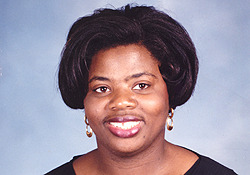
Jonda C. McNair is the chair of the Coretta Scott King Book Award Committee, which oversees the awards jury and other Coretta Scott King committees such as membership and publications. She served as jury chair a few years ago. She is an associate professor at Clemson University and co-edited Embracing, Examining and Evaluating African American Children’s and Young Adult Literature.
-
2014 Children’s Book Week Bookmark by Caldecott-Honoree Steve Jenkins Revealed!
Steve Jenkins has written and illustrated more than 30 nonfiction picture books about the natural world, many of them with his co-author and wife Robin Page. Steve’s books represent the …
-
Bestselling Fancy Nancy Illustrator Robin Preiss Glasser’s Official 2014 Children’s Book Week Poster Unveiled at Bookweekonline.com
PREISS GLASSER’S OFFICIAL POSTER COMMEMORATES THE 95TH ANNUAL CELEBRATION OF CHILDREN’S BOOK WEEK (MAY 12-18, 2014), THE LONGEST-RUNNING NATIONAL LITERACY INITIATIVE IN THE COUNTRY FOR IMMEDIATE RELEASE New York, NY …


















